
Southeast Asia is emerging as a major player in the global energy landscape. According to the Southeast Asia Energy Outlook 2024 report published by the In
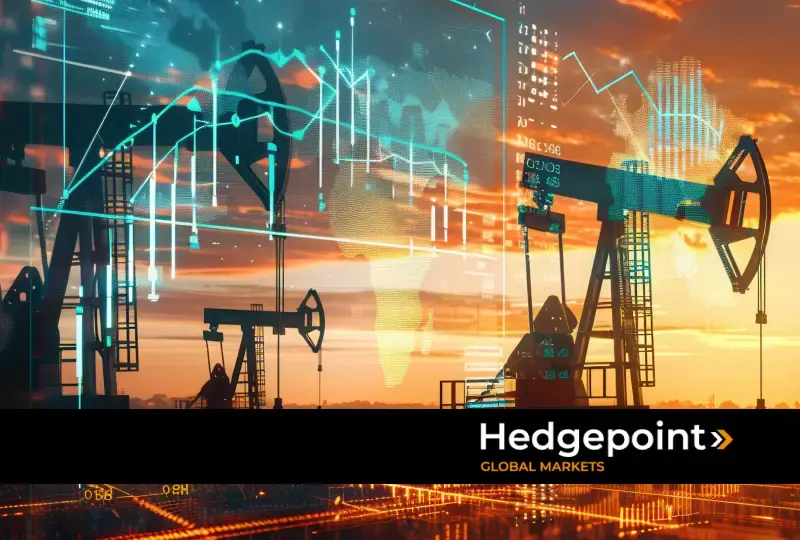
Southeast Asia is emerging as a major player in the global energy landscape. According to the Southeast Asia Energy Outlook 2024 report published by the International Energy Agency (IEA), the region will play a central role in the growth of energy demand in the coming decades.
In this context, we explore the key trends highlighted by the IEA, including Southeast Asia’s fuel consumption, outlook to 2050, energy demand growth, and more. Countries in this region include: Brunei, Cambodia, Indonesia, Laos, Malaysia, Myanmar, Philippines, Singapore, Thailand, and Vietnam.
Follow the content and enjoy!
Read also:
The IEA report deals with data on energy consumption in Southeast Asia in recent decades. According to the organization, the region has accounted for 11% of global energy demand growth since 2010. In addition, local countries are expected to contribute more than 25% of the growth by 2035 in the Stated Policies Scenario (STEPS), which is based on currently declared energy policies.
As the region’s economy has grown over the past decade, energy demand has more than doubled since 2000. Most of this growth has been met by fossil fuels, primarily coal. See below for data collected by the IEA:
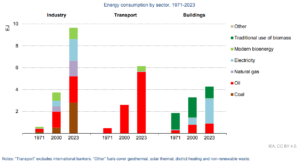
As for oil, the region’s demand grew by 60% over the same period. However, the growth in consumption has been fueled by imports, as production in Southeast Asia has fallen by more than a third since the last century.
This increase in oil demand is driven by industry and transportation. As shown in the chart above, transportation consumption more than doubles, rising from 1.3 mb/d (million barrels per day) in 2000 to 2.8 mb/d in 2024.
Coal’s share of the local energy mix increases from 9% in 2000 to 28% in 2024. Coal has an even larger share in electricity generation, reaching 45%. However, the region’s electricity sources have diversified over the past five years. See the charts:
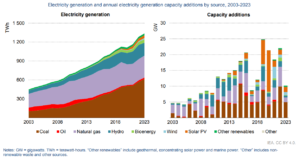
Due to geopolitical tensions, energy security remains a priority for Southeast Asia. The IEA points out that the recent global crisis has highlighted the region’s vulnerability to rising prices, as it depends on the Middle East for 60% of its imported oil.
In terms of energy consumption, oil and coal each account for more than a quarter of the region’s energy needs. Natural gas comes in third, accounting for about one-fifth. The organization also noted that coal will generate half of the electricity consumed in Southeast Asia in 2023, in addition to 30% of industrial demand.
Also read:
According to the data presented in the IEA report, energy demand in Southeast Asia is expected to continue growing until 2050. The local energy mix is expected to change completely by mid-century if countries meet their climate change targets. See the STEPS and APS (Announced Promises Scenario) expectations in the graphs below:
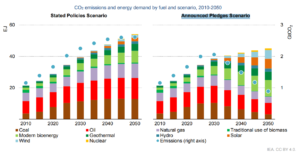
Despite the change in the energy mix, all scenarios show higher demand by 2050. As a result, the matrix is expected to continue to diversify energy sources, with all types of fuels guaranteeing an important position in the production chain.
Currently, oil and coal are the main sources in the region and are still expected to account for almost 30% of the energy mix in 2035. The report also points out that the composition of this mix is still unclear, but that industry should continue to be the most energy-intensive sector. However, the transport sector is expected to reduce fuel demand due to the increase in electric cars. Follow the data:
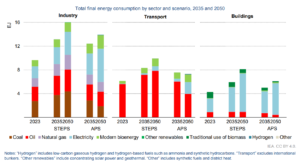
In the transportation sector, declining demand for fossil fuels is accompanied by increasing demand for biofuels and electricity. The report notes that this growth will be significant, but that oil will continue to dominate the sector. Follow the story:
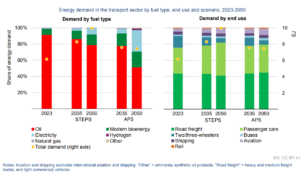
Currently, road transport and freight account for almost half of the energy demand in Southeast Asia (48%), followed by passenger cars (34%), two/three-wheeled vehicles (16%), and buses (2%). In this scenario, oil meets 90% of demand and biofuels only 8%. By 2050, the share of biofuels is expected to rise to 20%.
Also read:
According to the data, Southeast Asia’s energy demand is expected to exceed that of the European Union by 2050. This growth in energy demand will be led by the electricity sector.
The institution points out that demand is expected to grow at an annual rate of 4%, driven by the use of air conditioning. See the data below:
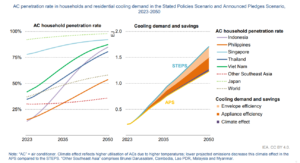
Finally, the institution also reports that clean energy sources, such as wind and bioenergy, are expected to meet more than one-third of the region’s growth in energy demand by 2035. Check out the chart:
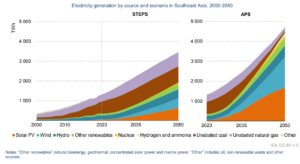
The Hedgepoint team is always on the lookout for global trends in the energy sector, such as the IEA report itself. You can also access other exclusive Hedgepoint content on our HUB. The platform gives you access to data and in-depth insights on the energy sector.
Subscribe now and check out the content that will guide your decisions in the commodities market!
Also read:
————————————————————————

Rua Funchal, 418, 18º andar - Vila Olímpia São Paulo, SP, Brasil
Contato
(00) 99999-8888 example@mail.com
Section
Home
O que Fazemos
Mercado
Quem Somos
HUB
Blog
Esta página foi preparada pela Hedgepoint Schweiz AG e suas afiliadas (“Hedgepoint”) exclusivamente para fins informativos e instrutivos, sem o objetivo de estabelecer obrigações ou compromissos com terceiros, nem de promover uma oferta ou solicitação de oferta de venda ou compra de quaisquer valores mobiliários, commodity interests ou produtos de investimento.
A Hedgepoint e suas associadas renunciam expressamente a qualquer uso das informações contidas neste documento que direta ou indiretamente resulte em danos ou prejuízos de qualquer natureza. As informações são obtidas de fontes que acreditamos serem confiáveis, mas não garantimos a atualidade ou precisão dessas informações.
O trading de commodity interests, como futuros, opções e swaps, envolve um risco substancial de perda e pode não ser adequado para todos os investidores. Você deve considerar cuidadosamente se esse tipo de negociação é adequado para você, levando em conta sua situação financeira. O desempenho passado não é necessariamente indicativo de resultados futuros. Os clientes devem confiar em seu próprio julgamento independente e/ou consultores antes de realizar qualquer transação.
A Hedgepoint não fornece consultoria jurídica, tributária ou contábil, sendo de sua responsabilidade buscar essas orientações separadamente.
A Hedgepoint Schweiz AG está organizada, constituída e existente sob as leis da Suíça, é afiliada à ARIF, a Associação Romande des Intermédiaires Financiers, que é uma Organização de Autorregulação autorizada pela FINMA. A Hedgepoint Commodities LLC está organizada, constituída e existente sob as leis dos Estados Unidos, sendo autorizada e regulada pela Commodity Futures Trading Commission (CFTC) e é membro da National Futures Association (NFA), atuando como Introducing Broker e Commodity Trading Advisor. A Hedgepoint Global Markets Limited é regulada pela Dubai Financial Services Authority. O conteúdo é direcionado a Clientes Profissionais e não a Clientes de Varejo. A Hedgepoint Global Markets PTE. Ltd está organizada, constituída e existente sob as leis de Singapura, isenta de obter uma licença de serviços financeiros conforme o Segundo Anexo do Securities and Futures (Licensing and Conduct of Business) Act, pela Monetary Authority of Singapore (MAS). A Hedgepoint Global Markets DTVM Ltda. é autorizada e regulada no Brasil pelo Banco Central do Brasil (BCB) e pela Comissão de Valores Mobiliários (CVM). A Hedgepoint Serviços Ltda. está organizada, constituída e existente sob as leis do Brasil. A Hedgepoint Global Markets S.A. está organizada, constituída e existente sob as leis do Uruguai.
Em caso de dúvidas não resolvidas no primeiro contato com o atendimento ao cliente (client.services@hedgepointglobal.com), entre em contato com o canal de ouvidoria interna (ombudsman@hedgepointglobal.com – global ou ouvidoria@hedgepointglobal.com – apenas Brasil) ou ligue para 0800-8788408 (apenas Brasil).
Integridade, ética e transparência são valores que guiam nossa cultura. Para fortalecer ainda mais nossas práticas, a Hedgepoint possui um canal de denúncias para colaboradores e terceiros via e-mail ethicline@hedgepointglobal.com ou pelo formulário Ethic Line – Hedgepoint Global Markets.
Nota de segurança: Todos os contatos com clientes e parceiros são realizados exclusivamente por meio do nosso domínio @hedgepointglobal.com. Não aceite informações, boletos, extratos ou solicitações de outros domínios e preste atenção especial a variações em letras ou grafias, pois podem indicar uma situação fraudulenta.
“Hedgepoint” e o logotipo “Hedgepoint” são marcas de uso exclusivo da Hedgepoint e/ou de suas afiliadas. O uso ou reprodução é proibido, a menos que expressamente autorizado pela HedgePoint.
Além disso, o uso de outras marcas neste documento foi autorizado apenas para fins de identificação. Isso, portanto, não implica quaisquer direitos da HedgePoint sobre essas marcas ou implica endosso, associação ou aprovação pelos proprietários dessas marcas com a Hedgepoint ou suas afiliadas.
aA Hedgepoint Global Markets é correspondente cambial do Ebury Banco de Câmbio, de acordo com a resolução CMN Nº 4.935, DE 29 DE JULHO DE 2021, Artigo 14 do Banco Central do Brasil (BACEN).
Para mais informações sobre nosso parceiro, serviços disponíveis, atendimento e ouvidoria, acesse o link a seguir: https://br.ebury.com/